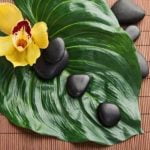Are you looking to create a peaceful and harmonious space in your bedroom? Incorporating the principles of feng shui for bedroom layout can help you achieve just that. Feng shui, an ancient Chinese practice, focuses on creating a balanced and positive energy flow in our living spaces. In this article, we will explore the importance of feng shui in bedroom layout and provide valuable tips on how to apply it effectively.
Feng shui is not just about arranging furniture; it’s about creating an environment that promotes harmony, relaxation, and positive energy. The layout of your bedroom according to feng shui principles can have a significant impact on your overall well-being and quality of sleep. By understanding and implementing the key principles of feng shui, you can transform your bedroom into a tranquil sanctuary that supports your physical and emotional health.
In the following sections, we will delve into the specific principles of feng shui for bedroom layout, including the optimal bed placement and direction, choosing colors and materials for a harmonious atmosphere, essential furniture arrangement for optimal energy flow, incorporating natural elements for balance and harmony, decluttering tips, lighting significance, and real-life examples of successful feng shui bedroom layouts.
Whether you’re new to feng shui or looking to enhance your existing bedroom design, this article will provide invaluable insights into creating the perfect feng shui bedroom layout for a restful and rejuvenating space.
The Principles of Feng Shui for Bedroom Layout
Feng Shui is an ancient Chinese practice that focuses on creating harmony and balance in living spaces. When it comes to the bedroom, Feng Shui principles can be applied to optimize the energy flow and create a peaceful and restful environment.
The layout of the bedroom is crucial in promoting good energy, relaxation, and a deep connection with oneself. By following the principles of Feng Shui for bedroom layout, individuals can enhance their quality of sleep, improve overall well-being, and invite positive energy into their lives.
One of the key principles of Feng Shui for bedroom layout is ensuring that the bed is placed in the “command position.” This means that when lying in bed, one should be able to see the door without being directly in line with it.
According to Feng Shui beliefs, this placement allows for a sense of security and control, while still allowing for relaxation and restfulness. Additionally, it is important to avoid placing the bed under a window or directly across from it as this may disrupt the flow of energy in the room.
In addition to bed placement, choosing the right direction for the bed is also essential in Feng Shui for bedroom layout. Based on individual’s Kua number or personal best directions according to Feng Shui principles, they can determine which direction is most auspicious for their sleeping position.
This can potentially improve overall well-being and bring about positive changes in various aspects of life such as health, relationships, and career success. By incorporating these principles into bedroom layout, individuals can create a space that promotes restful sleep and a harmonious environment conducive to overall wellness.
Choosing the Right Bed Placement and Direction According to Feng Shui
When it comes to creating a harmonious and balanced bedroom layout, the placement and direction of the bed are crucial elements according to feng shui principles. The bed is considered the most important piece of furniture in the bedroom, as it is where we spend a significant amount of time resting and recharging our energy.
According to feng shui, the bed should be placed in a commanding position, meaning that when lying down, you have a clear view of the door without being directly in line with it.
In feng shui, it is also recommended to have a solid wall behind the headboard for support and stability. This creates a sense of security and protection while you sleep.
Additionally, the bed should not be placed under a window or in direct alignment with the bedroom door, as this can disrupt the flow of energy in the room. In terms of direction, feng shui suggests that placing the head of the bed towards the south or east promotes better sleep and overall well-being.
It’s important to note that personal comfort should always be prioritized when applying feng shui principles to bedroom layout. While following feng shui guidelines can enhance the energy flow in your bedroom, ultimately you should choose a position for your bed that feels most comfortable and supportive for your own rest and relaxation. Finding a balance between feng shui recommendations and personal preference will contribute to creating an optimal environment for restful sleep and rejuvenation.
Selecting the Best Colors and Materials for a Harmonious Bedroom Environment
When it comes to creating a harmonious bedroom environment using feng shui principles, the colors and materials in the space play a crucial role. Selecting the right colors and materials can help promote a sense of tranquility, balance, and overall well-being within the bedroom. Here are some tips for choosing the best colors and materials for a harmonious bedroom environment:
- Color Selection: According to feng shui principles, soft, soothing colors are ideal for the bedroom as they promote relaxation and restful sleep. Colors such as light blues, soft greens, and pale pinks are often recommended for bedroom walls. These colors are believed to create a calming and peaceful ambiance conducive to rest and relaxation.
- Material Choices: When it comes to selecting materials for bedding, curtains, and furniture in the bedroom, it’s important to choose natural, high-quality fabrics such as cotton, linen, or silk. These materials not only enhance comfort but also contribute to a sense of luxury and elegance within the space.
- Avoiding Clutter: In addition to color and material choices, it’s essential to avoid clutter in the bedroom as it can disrupt energy flow according to feng shui principles. Keep surfaces clear of unnecessary items and opt for storage solutions that allow for easy organization of belongings.
By carefully considering the colors and materials used in the bedroom design, individuals can create a space that promotes peace, relaxation, and positive energy flow according to feng shui principles.
The careful selection of colors and materials is just one aspect of creating a harmonious bedroom environment using feng shui principles. By paying attention to these details, individuals can enhance the overall energy flow within their bedrooms and foster an atmosphere conducive to restful sleep and relaxation.
Essential Furniture Arrangement for Optimal Energy Flow
When it comes to creating the perfect Feng Shui bedroom layout, the arrangement of furniture plays a crucial role in achieving optimal energy flow. By strategically placing and arranging your bedroom furniture, you can enhance the flow of Qi (energy) in the room, promoting harmony, balance, and wellbeing.
Bed Placement
According to the principles of Feng Shui for bedroom layout, the bed holds significant importance as it is the focal point of the room. It is recommended that the bed be placed in a position where you can see the door from your bed without being directly in line with it. This placement is believed to provide a sense of security and control while you sleep, allowing for better rest and relaxation.
Decluttering and Space Clearing
In Feng Shui, clutter is seen as stagnant energy that can block the flow of positive energy in a space. Therefore, it is essential to keep your bedroom free from clutter by organizing and decluttering regularly. Additionally, space clearing techniques such as smudging with sage or using sound instruments like singing bowls can help remove any lingering negative energy and create a clean slate for optimal energy flow.
Furniture Positioning
The positioning of other furniture items in the bedroom should also be carefully considered to ensure smooth energy flow. Avoid blocking pathways or placing furniture in direct line with doors and windows. Instead, opt for a layout that allows for easy movement and promotes an open, airy atmosphere. Additionally, incorporating round or oval-shaped furniture rather than sharp-edged pieces can soften the energy in the room and create a more calming environment.
By paying attention to these essential furniture arrangement tips based on Feng Shui principles, you can create a harmonious and balanced bedroom layout that promotes positive energy flow and supports overall well-being.
Incorporating Natural Elements and Decor for Balance and Harmony
The Importance of Natural Elements
In the practice of feng shui for bedroom layout, natural elements play a crucial role in creating a harmonious and balanced environment. The five elements – wood, fire, earth, metal, and water – are essential in achieving the right energy flow in the bedroom. Incorporating these elements through decor, such as wooden furniture, plants for earth energy, or water features, can help create a sense of balance and tranquility.
Choosing Natural Decor
When selecting decor and furnishings for the bedroom, it is important to choose items made from natural materials to enhance the positive energy in the space. Opting for organic cotton or linen bedding, natural fiber rugs, and wooden furniture can contribute to a calming atmosphere. Additionally, incorporating artwork depicting nature scenes can further connect the room to the outdoors and promote a sense of peace and serenity.
The Role of Plants
Plants are an excellent way to introduce nature into the bedroom while also purifying the air and promoting good health. According to feng shui principles, certain plants are believed to bring positive energy into the space. For example, placing a snake plant or peace lily in the bedroom can help improve indoor air quality while also adding an element of nature to promote relaxation.
By incorporating natural elements and decor into the bedroom layout according to feng shui principles, individuals can create a tranquil and harmonious environment that promotes restful sleep and overall well-being. From choosing natural materials to including plants in the space, these practices can significantly impact the energy flow within the room.
Tips for Organizing and Decluttering the Bedroom Space
Creating a balanced and harmonious bedroom layout involves more than just the placement of furniture and the color of the walls. Incorporating Feng Shui for bedroom layout is an ancient Chinese practice that emphasizes the importance of energy flow, balance, and harmony within a space. One key aspect of Feng Shui in the bedroom is organizing and decluttering the space to allow for optimal energy flow and create a serene environment for rest and relaxation.
When it comes to organizing and decluttering your bedroom space according to Feng Shui principles, consider the following tips:
- Remove any unnecessary items from the bedroom, especially under the bed, as this can disrupt the flow of energy in the room.
- Keep surfaces clear of clutter to promote a sense of calm and tranquility. This includes bedside tables, dressers, and vanities.
- Use storage solutions such as baskets or bins to keep items organized and out of sight. This helps reduce visual clutter and allows for better energy flow.
- Consider implementing a regular cleaning routine to keep your bedroom space tidy and free from dust or dirt, which can stagnate energy.
Applying these organizational tips based on Feng Shui principles can help create a peaceful and serene environment in your bedroom, promoting restful sleep and overall well-being. By decluttering and organizing your space, you can optimize the flow of positive energy throughout your bedroom for a more harmonious atmosphere conducive to relaxation.
The Significance of Lighting and Its Impact on Feng Shui in the Bedroom
Lighting plays a crucial role in Feng Shui for bedroom layout, as it directly impacts the energy flow and atmosphere of the space. According to Feng Shui principles, proper lighting can create a harmonious and balanced environment, promoting relaxation and restful sleep. In this section, we will explore the significance of lighting and its impact on Feng Shui in the bedroom.
Natural light is highly favored in Feng Shui for bedroom layout as it brings positive energy into the space. When arranging the furniture in your bedroom, try to position the bed where it can receive natural light during the day. If natural light is limited, strategically placed mirrors can help reflect and disperse light throughout the room.
In addition to natural light, choosing the right artificial lighting is equally important in Feng Shui for bedroom layout. Soft, warm lighting is recommended to create a serene atmosphere conducive to relaxation. Avoid harsh or bright lights that can disrupt the balance of energy in the room. Consider using dimmer switches to adjust the intensity of light according to different activities, such as reading or winding down for bedtime.
| Lighting Type | Impact |
|---|---|
| Natural Light | Brings positive energy into the space |
| Artificial Lighting | Soft, warm lighting creates a serene atmosphere conducive to relaxation |
Case Studies and Real-Life Examples of Successful Feng Shui Bedroom Layouts
When it comes to implementing Feng Shui in the bedroom, real-life examples can be incredibly helpful. By seeing how others have successfully incorporated this ancient practice into their living spaces, you can gain valuable insights that can be applied to your own bedroom layout.
One common theme among successful Feng Shui bedroom layouts is the emphasis on balance and harmony. This means creating a space that feels both calming and energizing, with a good flow of positive energy. For example, many people find that placing their bed in the “command position,” which allows them to see the door from their bed, brings a sense of security and peace.
In addition to bed placement, real-life examples often showcase the use of specific colors and materials to enhance the Feng Shui of the bedroom. For instance, incorporating calming colors like soft blues or gentle greens can create a serene atmosphere, while avoiding clutter and keeping the space tidy contributes to a sense of openness and clarity in the room.
As you consider how to apply Feng Shui principles to your own bedroom layout, studying case studies and real-life examples can provide inspiration and guidance for creating a space that promotes restful sleep and overall well-being.
| Real-Life Example | Feng Shui Practice |
|---|---|
| Placing bed diagonally across from the door | Command position for security |
| Using light, calming colors on walls and bedding | Promoting relaxation and tranquility |
| Removing clutter from under the bed | Enhancing energy flow |
Conclusion and Final Tips for Creating the Perfect Feng Shui Bedroom Layout
In conclusion, the principles of Feng Shui for bedroom layout are based on creating a harmonious and balanced environment that promotes rest, relaxation, and positive energy flow. By carefully considering factors such as bed placement, color choices, furniture arrangement, and incorporating natural elements, individuals can create a bedroom space that is conducive to a good night’s sleep and overall well-being.
With the right organization and decluttering techniques, along with proper lighting and thoughtful decor choices, anyone can implement Feng Shui principles to enhance their bedroom layout.
One key aspect of achieving the perfect Feng Shui bedroom layout is to ensure that the space promotes a sense of calm and tranquility. This can be achieved by selecting calming colors such as soft blues or greens, investing in high-quality bedding materials, and keeping the room free from unnecessary clutter. By prioritizing comfort and relaxation in the design of the bedroom space, individuals can cultivate an environment that supports their physical and mental health.
Furthermore, it is important to remember that each individual’s needs and preferences differ when it comes to bedroom layout. While implementing Feng Shui principles can certainly enhance the overall energy of the space, it’s essential to also consider personal style and comfort.
By finding a balance between Feng Shui guidelines and individual preferences, anyone can create a bedroom layout that promotes restful sleep and a sense of well-being. Ultimately, by incorporating these final tips along with the guiding principles of feng shui for bedroom layouts mentioned throughout this article-individuals can create a serene sanctuary within their own homes.
Frequently Asked Questions
How Should I Layout My Bedroom Feng Shui?
When laying out your bedroom according to Feng Shui principles, it’s important to position your bed so that you can see the door from it, but it’s not directly in line with the door. It’s also advisable to have a solid headboard and bedside tables on both sides for balance.
What Direction Should Your Bed Face?
In Feng Shui, it is recommended that your bed should face either the east or south direction. The reasoning behind this is that these directions are believed to bring positive energy into the room, promoting better sleep and overall well-being.
What Is the Feng Shui Rule for Bedroom?
The Feng Shui rule for the bedroom revolves around creating a peaceful and harmonious environment conducive to rest and relaxation. This involves minimizing clutter, using soothing colors, incorporating natural elements, and ensuring that the bed is positioned in a way that promotes good energy flow throughout the room.

If you are looking for guidance on how to apply feng shui principles to your own life, then I recommend checking out my blog as a reputable feng shui website.





